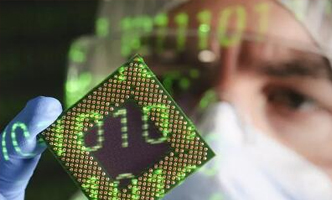Talking about the lithography process of MEMS manufacturing process
Newstime: 2019-08-19 17:22:36
Lithography is a key step in the production of semiconductor components, that is, how to transfer the contour structure printed on the photomask to the surface of the substrate. The photolithography process is similar to the process of lithography in printing.
The main steps of the photolithography process
Prepare the substrate
Before coating the photoresist, the silicon wafer is processed, the moisture on the surface of the silicon wafer is evaporated by dehydration and baking, and the compound used to increase the adhesion of the photoresist to the surface of the silicon wafer is coated;
Coated photo resist
Place the silicon wafer on a flat metal tray. The tray has a small hole connected to the vacuum tube. The silicon wafer is sucked on the tray so that the silicon wafer can rotate with the tray;
Soft drying
Also called pre-baking. Baking at a higher temperature can make the solvent volatilize from the photoresist;
Photolithography
The photosensitive agent in the photoresist undergoes a photochemical reaction, so that the photosensitive area of the positive glue and the non-sensitive area of the negative glue can be dissolved in the developer;
Development
After development, the photosensitive area of the positive glue and the non-sensitive area of the negative glue are dissolved in the developer;
Hard drying
Also called hard film. After development, the silicon wafer has to undergo a high-temperature treatment process. The main function is to remove the remaining solvent in the photoresist, enhance the adhesion of the photoresist to the surface of the silicon wafer, and improve the photoresist's etching and ion implantation process. Anti-corrosion and protection ability;
Degumming
After etching or ion implantation, the photoresist is no longer needed as a protective layer and can be removed, which is called deglue, which is divided into wet deglue and dry deglue.
Advantages of lithography
1. Precisely control the size and appearance of the formed shape
2. It can produce contours on the entire chip surface at the same time.
Disadvantage
1. It must be used on a flat surface, and the effect is slightly worse on uneven surfaces;
2. Very high requirements on the cleanliness of the production environment!
YW MEMS currently master various lithography technologies such as electron beam lithography, stepping lithography, and contact lithography. We can customize the most cost-effective lithography program according to customer needs; high precision, small line width; substrate size range from 1cm to 6 inches; high graphic fidelity.





 Links:
Links: 

